This post has not been edited by the GamesBeat staff. Opinions by GamesBeat community writers do not necessarily reflect those of the staff.
The year was 1979, the place was Kyoto Japan. A man by the name of Gunpei Yokoi was a riding a bullet train to get to work when he noticed a gentleman who also appeared as if he was on his way to work was playing with his calculator. This proved to be a monumental moment of serendipity for Yokoi. From witnessing this man and his calculator, he came up with the idea of a portable video game, which would also have a clock built in on a second screen.
His dream would eventually become the Game & Watch series of systems, which would each contain one game with two varying versions and of course a clock. Game & Watch would play a major role in taking a little known niche company called Nintendo in a whole new direction, which eventually lead them to becoming the most recognizable company in the home console and portable gaming markets.

(I can't quite put my finger on it but something about this design looks familiar)
But we’re not here to talk about that. We’re here to talk about Yokoi’s successor to the Game & Watch series, the Game Boy, which unlike other portable systems at the time would use the same model as a home console. Instead of only being able to play a single game, the Game Boy would act as a portable console in the sense that it would be a system capable of playing any number of cartridge games that was designed for the system.
It may not have had the graphics, music and or even the use of color that the Nintendo Entertainment System had (GB had lower quality 8-Bit and only used two colors: Yellow & Black) but it became an incredibly popular handheld and was backed up by a large library of games and some truly classic titles. Nintendo would go on to sell 118.69 million units world-wide since it’s launch in 1989.
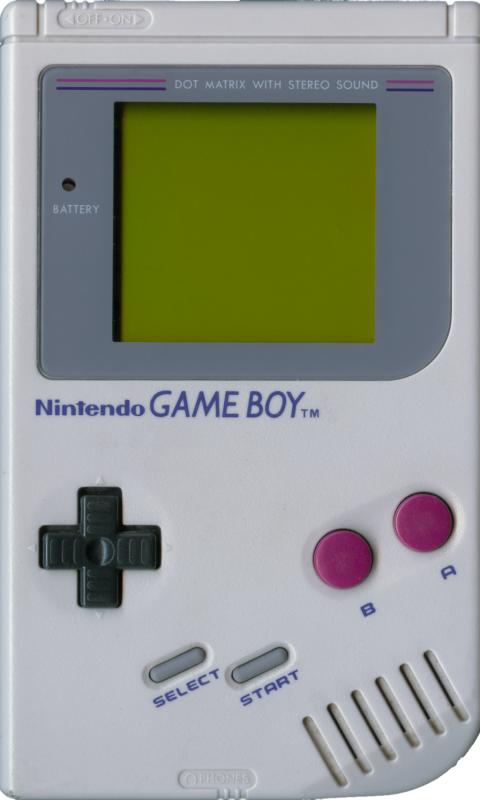
(Best brick ever!)
One of the launch titles for this portable revolution was a little game known as Super Mario Land. That’s right. Nintendo’s most recognizable character was there to help boost sales during the systems launch and actually contributed greatly to the systems early success, thus become one of it’s definitive titles and one of its all time highest sellers with 18.06 million copies sold. These impressive sales figures also makes it the 7th highest selling Mario title in the series history and I’m here tonight to review it.
Sure Mario Land sold incredibly well but does the quality of game make it deserving of a score as high as its sales?
Fun Fact: Yokoi served as the game’s producer.
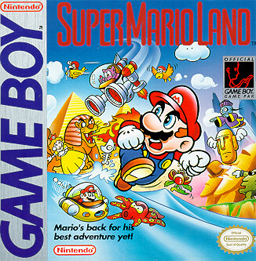
The story here is that Mario is in the far off Kingdom of Sarasaland (I think he is on vacation. I can’t remember) when suddenly he discovers that Princess Daisy has been kidnapped by the strange spaceman, Tatanga who plans to marry her to rule her kingdom and he must rush to her rescue. Basically, it’s the same plot as any other Super Mario title except you swap The Mushroom Kingdom for Sarasaland, Peach for Daisy and Bowser for Tatanga.
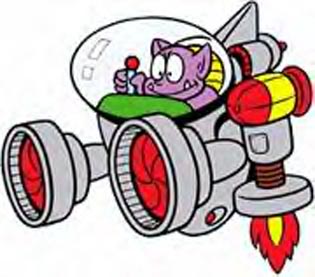
(What ever happened to Tatanga anyway?)
The game even does that whole “Sorry but your Princess is in another castle” routine but it has it’s own unique twist to it, which when you think about it is pretty funny.
[embed:http://www.youtube.com/watch?v=stkkt5BJEmY ]
(LOLZ. He can't seem to get any.)
The game’s music is good. Like any other Super Mario title, Mario Land features a soundtrack that is filled to the brim with some really catchy and whimsical light-hearted fair, as well as a few darker toned melodies are thrown in when the mood calls for them. It may not have the same audio quality as an NES game but Mario Land did prove that the Game Boy was more than capable of producing some very note worthy tracks.
The sound effects are good to. Well except for the noise that the bosses make when they are hit with a fireball. I thought someone was hitting a baby with a cat.
The graphics are pretty primitive by today’s standard and they didn’t really come too close to capturing the same 8-bit designs as console games of the day. Hell, it didn’t even show off the full potential of the Game Boy’s graphical capabilities. However, for the time it looked fantastic and it still holds up pretty well. Mario looked as he did in the original Super Mario Bros., the Goombas, Piranha Plants, Bullet Bills and Koopas (which also act as bombs for some reason) look like the ones from the NES (although much smaller) and the designs of the original enemies are really creative. We have giant bugs, walking Easter Island heads, fish skeletons, jumping Chinese Imperial guards, sea horses that shoot fireballs and other wonderfully wacky things. The foregrounds of each level are also designed well, with spooky looking caves, ancient temples, tropical islands, Easter Island, the Orient etc.. all looking better than anything seen in a handheld game at the time. Although the background objects like trees, candles, Easter Island Heads and clouds look like they were drawn on an Etch A Sketch. The graphics aren’t perfect but this was a launch title for a system that was still in the experimenting stages with its technology so I will let it slide.
For the most part the gameplay is exactly what you would expect from a Mario Game, there are a few differences but we’ll get to those later. Mario travels through each level stomping on enemies, busting blocks with his head to gather coins (of course 100 = 1UP), fire flowers, growth mushrooms and the occasional 1-UP heart (lack of color means no green mushroom), as he tries to reach the end of each level without dying. He also has to travel through various worlds to reach the princess (4 worlds each with three levels making 12 levels in total) and fight a boss at the end of each one. Two of these boss fights actually operate under the same principle as the battles with Bowser in the original Super Mario Bros. With the goal being to either use the fire flower to kill them or to reach a lever that is directly behind them to reach the room that Daisy is being held in. I know this lacks the same punch as chopping down a bridge and sending your mortal enemy into a fire pit of death but it’s similar enough. The other two boss fights are a tad different but I’ll get to those soon enough.
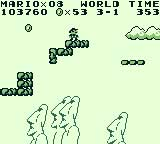
(Mario's visit to Easter Island went OK considering)
Like I said earlier, there are some differences in gameplay that sets it apart from other Super Mario games of the time. First of all, you should notice that the game is missing the Bros. aspect in the title because it is totally a single player experience. Sorry Luigi, you didn’t make the cut. I guess the developers didn’t think of using the Game Boy’s Link Cable to make it a two-player game.
Another difference is the addition of a Bonus Stage. At the end of each level, Mario will have to choose to enter one of two doors. The first door on the bottom of the screen will take him straight through to the next level. The second door is at the very top of the screen. If he can clear a few obstacles, he can use that door to enter the Bonus Stage. The rules of this level are pretty simple: Mario and a ladder are scrolling up and down a number of platforms that have either a number of extra lives or a fire flower at the end of them. It is up to you to stop Mario with the push of a button. Once he stops on a platform, he will walk across and when he reaches the middle of it, he will use the ladder to climb up to the next platform to grab the power-up that is there.
Another one is the fact that you have to earn continues. Instead of being given a set number of continues (like in other Super Mario games), you will have to get a certain number of points to gain a continue. I can’t remember how many exactly (and I do apologize for that) but I do know that it is a pretty big number. In all of the times I have played this since I was five (20 years), I can’t remember ever getting more than two continues in one play-through.
One last gameplay aspect that hasn’t been featured in a Mario game up to this point is the addition of shmup levels. One level places Mario under the sea, as he blasts away through entire schools of killer fish, angry squids and a giant fire breathing sea horse. The other has our favorite plumber flying through the not so friendly skies as he fends off ill-tempered birds and enemy fighter planes, only to face off against Tatanga and his interstellar spaceship at the end.
What can I say? The core mechanics are vintage Mario and work just as well here as in any other game, although jumping can feel a tad stiff at times and when jumping on koopas, you have to land directly on the shell to take it out of commission. There were a few moments where I thought I landed on it because I went through their eyes but I ended up taking damage. But even with those mild complaints, the platforming sections (which takes up the vast majority of the game) provide an entertaining and actually fairly challenging experience.
[embed:http://www.youtube.com/watch?v=tKL-ZDYrpkQ ]
(I love this theme)
The shmup levels are examples of fast pace aerial/deep seas manoeuvring/combat at its finest. Well maybe not finest but they are a blast to play and it is a damn shame that there are only two of these levels in the game. It would have been great to see at least one more.
The game is a good Mario title and would be a great addition to anyone’s Game Boy collection. If you can find it at a game shop somewhere for a fair price, I say pick it up.
Final Score: 8/10
I would just like to say one last thing; I remember watching videos made by Rinry in which she tested the durability of NES, SNES and Sega Genesis cartridges. To make a long story short: She discovered that they are pretty darn tough. I can say that from personal experience that Game Boy cartridges are also built to last.

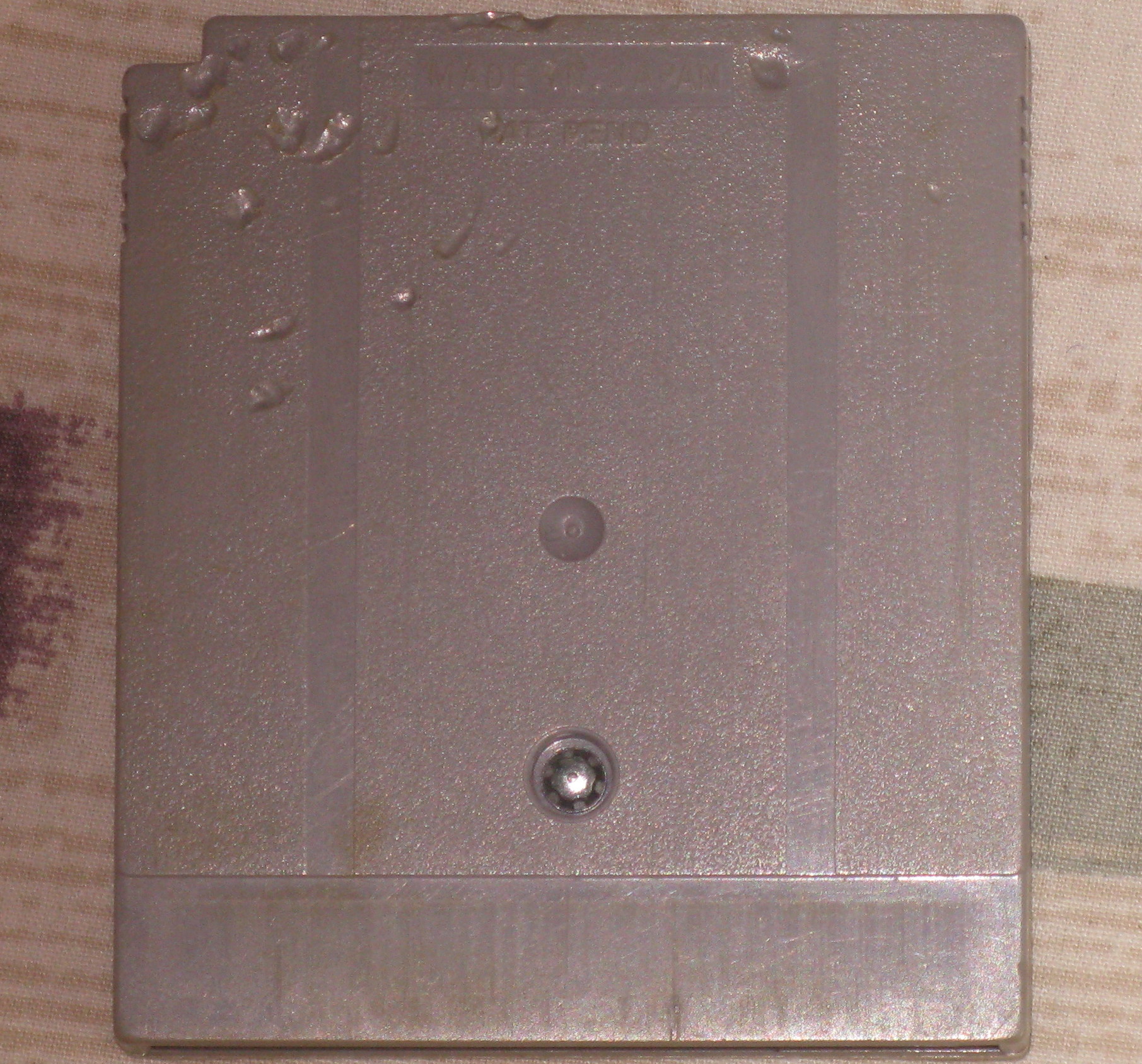
(Every time I look at this cartridge, I smile)
